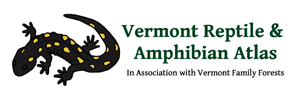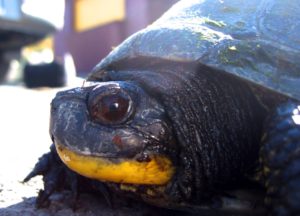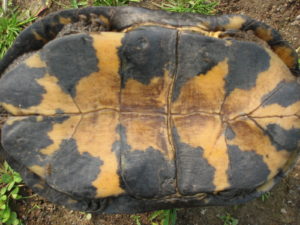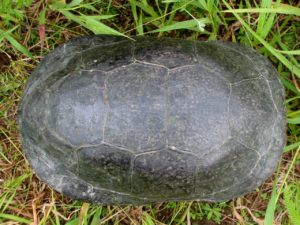Emydoidea blandingii
Identification
Blanding’s Turtles have a bright, solid-yellow chin and throat and a highly-domed carapace (shell covering the back). Their carapace length can be from 7-9 inches. The carapace is dark with light flecking. The plastron (shell covering the belly) is yellow with black on the outer edges of the scutes. The posterior margin (back edge) of the carapace is smooth. The plastron is hinged, which enables it to bend and partially close the shell.
Get more detailed identification and life history information by downloading the chart here.
You can learn more about this species and see some video footage by checking out this clip from our Rattlers, Peepers & Snappers DVD. Find answers to some frequently asked questions about turtle nesting, what to do if a turtle nests on your property, and how to protect turtle nests at this link.
Range/Habitat
No populations of the Blanding’s Turtle have been located in Vermont, but they exist to the east, south, and west of us (the closest population about 15 miles away from Vermont); some small populations are separated from others by great distances.
Blanding’s Turtles live primarily in wetlands but they also travel overland between wetlands.
Status
The possibility of a population being found in Vermont is small, but worth mentioning. Please report all suspected sightings of this species in Vermont. Take photos if possible.
Additional Photos
More Info
- Emydoidea blandingii at Animal Diversity website
- Emydoidea blandingii at Canadian Herpetological Society website
- Blanding’s Turtle Working Group information from NEPARC





